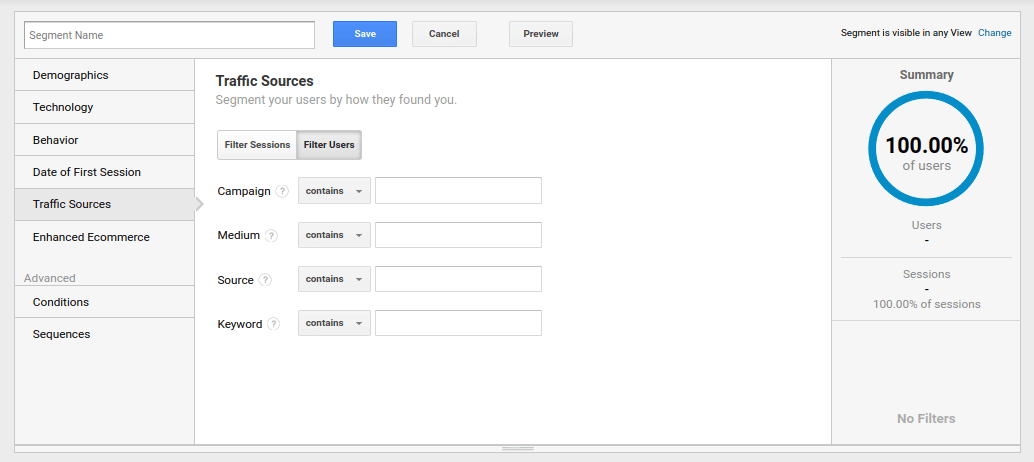Reliable Approaches for Remarketing in Google Analytics
In the world of electronic marketing, the world of remarketing in Google Analytics stands as a pivotal device for services aiming to boost their on-line visibility and conversion prices. With strategic target market segmentation, tailored remarketing checklists, and interesting advertisement creatives, businesses can craft tailored campaigns that reverberate with their target audience. Nonetheless, the real success lies in the ability to constantly fine-tune and maximize these techniques based on efficiency metrics and information understandings. By checking out the subtleties of dynamic remarketing and leveraging sophisticated monitoring devices, companies can open the full potential of their remarketing initiatives, leading to raised brand name exposure and consumer engagement.
Target Market Segmentation
Making use of audience segmentation is a pivotal method in enhancing the performance of remarketing projects within Google Analytics. By separating your target market into unique teams based on their actions, demographics, or interests, you can customize your marketing messages to be a lot more appropriate and interesting. This strategy enables you to deliver individualized advertisements to particular sections, boosting the chance of conversion.

Moreover, target market division aids you comprehend the differing needs and preferences of various consumer groups, allowing you to craft even more engaging ad creatives and offers. This targeted technique not just enhances the performance of your remarketing initiatives but additionally enhances total campaign efficiency.
Establishing Remarketing Checklists
To successfully implement remarketing strategies in Google Analytics, the first step includes creating targeted remarketing listings based on particular audience communications. Establishing remarketing listings enables marketing professionals to section their website visitors into different classifications based upon their behavior, such as pages seen, items looked for, or actions handled the site. By defining these sections, online marketers can then develop personalized and appropriate ads that target these certain teams, enhancing the possibility of conversion.
Remarketing checklists can be set up making use of different standards such as page check outs, period of check out, details goal conclusions, and even details events triggered on the web site. This level of personalization enables online marketers to customize their advertisements to match the passions and choices of each segmented target market, resulting in greater engagement and conversion prices.
Additionally, remarketing checklists can additionally be developed based on data imported from other resources like CRM systems, allowing for much more accurate targeting. By establishing these targeted remarketing checklists, marketers can successfully connect to possible consumers who have currently revealed interest in their product and services, maximizing the impact of their remarketing campaigns.
Creating Compelling Advertisement Creatives
After segmenting website site visitors into targeted remarketing lists based upon certain target market interactions, the next essential step is to craft engaging ad creatives that resonate with each fractional team's rate of interests and preferences. The effectiveness of remarketing campaigns greatly depends on the ability of these ad creatives to capture the interest of the target market and drive them to take the wanted action.
To create engaging advertisement creatives, it is important to understand the distinct characteristics of each segmented team (What Is “Remarketing” In Google Analytics?). Customizing the messaging, visuals, and provides to straighten with the rate of interests and choices of the audience can dramatically boost the possibilities of conversion. Using dynamic ads that instantly change material based upon the user's habits can also improve the personalization of the ad experience

Surveillance Performance and Optimization
Efficient tracking of project performance and regular optimization are critical elements of successful remarketing methods in Google Analytics. To ensure the performance of remarketing projects, online marketers must routinely track essential efficiency metrics such as click-through prices, conversion rates, and return on ad invest. By checking these metrics, online marketers can obtain important understandings into the efficiency of their projects and recognize locations for renovation.
In Google Analytics, marketing find experts can utilize tools like conversion monitoring and audience segmentation to analyze the efficiency of their remarketing campaigns. Conversion tracking permits online marketers to track certain actions that customers take after clicking a remarketing advertisement, supplying important data on the efficiency of the project in driving wanted results. Audience segmentation, on the various other hand, makes it possible for marketing experts to separate their target market right into various sectors based on different criteria such as demographics, actions, and passions, permitting for even more targeted and personalized remarketing efforts.
Continual optimization is necessary for optimizing the impact of remarketing projects. Online marketers must utilize A/B testing to try out different ad creatives, messaging, and targeting methods to recognize the most reliable strategies. By frequently evaluating project efficiency data and making data-driven optimizations, online marketers can make sure that their remarketing campaigns are achieving the wanted outcomes and driving conversions successfully.
Leveraging Dynamic Remarketing
Using vibrant remarketing can substantially improve the significance and i thought about this influence of targeted advertisements in Google Analytics. This sophisticated technique permits marketers to show individualized ads to customers that have formerly seen their internet site or utilized their mobile application. By dynamically presenting services or products that the users have revealed rate of interest in, dynamic remarketing assists to maintain the brand fresh in their minds and motivates them to go back to finish a purchase.

Furthermore, vibrant remarketing campaigns can be automated and enhanced in real-time based on performance data, ensuring that the advertisements remain pertinent and efficient. By leveraging dynamic remarketing in Google Analytics, marketers can produce extra impactful and targeted marketing campaign that reverberate with their audience and drive outcomes.
Final Thought
To conclude, reliable remarketing methods in Google Analytics involve audience segmentation, targeted remarketing lists, engaging ad creatives, performance tracking, and vibrant remarketing. By concentrating on customized advertisements, data evaluation, and constant optimization, businesses can raise conversion rates and drive involvement successfully. Leveraging devices like conversion monitoring guarantees that advertisements stay relevant and customized, resulting in general success in remarketing efforts.
Through tactical target market segmentation, customized remarketing lists, and interesting ad creatives, services can craft important site individualized campaigns that resonate with their target audience. Using dynamic advertisements that automatically adjust material based on the user's actions can additionally improve the customization of the ad experience.
Conversion tracking permits marketers to track particular actions that customers take after clicking on a remarketing advertisement, offering valuable data on the effectiveness of the project in driving wanted outcomes.Utilizing vibrant remarketing can dramatically boost the relevance and effect of targeted ads in Google Analytics - What Is “Remarketing” In Google Analytics?.In final thought, effective remarketing techniques in Google Analytics entail target market division, targeted remarketing lists, compelling ad creatives, efficiency tracking, and dynamic remarketing